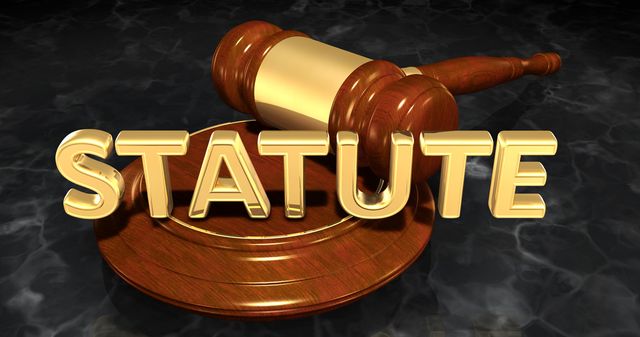1.3.2
Politics After The Depression
Elections after the Depression
Elections after the Depression
There were five national elections (four Reichstag and one presidential) between 1929 and 1933. Voters turned to extremist parties on both the left and right wings and coalition government became all but impossible.


Difficulty of coalition government
Difficulty of coalition government
- Political parties in Müller's coalition government represented different interest groups with conflicting demands. Parties wanted to protect their voters from cuts in government spending.
- Farmers wanted high food prices, workers wanted low. Businesses that exported wanted free trade, those supplying domestic markets wanted protectionism.
- Müller could not get his finance bill through the Reichstag. He asked Hindenburg to use Article 48, but the President refused. Müller was forced to resign.


Use of presidential government
Use of presidential government
- From March 1930 the government was using presidential decree.
- Chancellor Brüning depended on Hindenburg's use of Article 48.
- This reflects the inability of coalition government to agree on policies.


1928 and 1930 elections
1928 and 1930 elections
- May 1928:
- The Nazis saw the biggest increase from 2.6% of the vote in May 1928 to 18.3%. They were the second biggest party in the Reichstag.
- September 1930:
- The KPD vote rose from 10.6% to 13.1%. The SPD vote fell from 29.8% to 24.5%. The DVP and DNVP saw their vote roughly halved.


1932 elections
1932 elections
- July 1932:
- The Nazis saw a dramatic rise in support, becoming the largest single party in the Reichstag, with 37.4% of the vote.
- The KPD vote rose to 14.5%. The SPD vote fell about 25%. Apart from the Zentrum, all other parties saw their vote fall especially narrow interest parties.
- November 1932:
- The KPD vote rose to 16.9%, the DNVP from 6.2% to 8.9% and the DVP from 1.2% to 1.9%.
- The Nazis’ vote fell to 33.1%.


1933 election
1933 election
- March 1933:
- Hitler was already Chancellor. All parties’ votes declined but the Nazi party whose vote was 43.9%. Anti-Weimar parties controlled the Reichstag.
Governments After the Depression
Governments After the Depression
Müller and Brüning's coalition governments were fragile and the Chancellors struggled to get through their policies. Eventually, Article 48 became the only way to circumvent the internal divisions within the Weimar governments.


Müller's government
Müller's government
- Political parties in Müller's coalition government represented different interest groups with conflicting demands. Parties wanted to protect their voters from cuts in government spending.
- Farmers wanted high food prices, workers wanted low. Businesses that exported wanted free trade, those supplying domestic markets wanted protectionism.
- Müller could not get his finance bill through the Reichstag. He asked Hindenburg to use Article 48, but the President refused. Müller was forced to resign.


Brüning's government
Brüning's government
- Brüning from the Zentrum Party succeeded Müller.
- He was supported by the army and leading German industrialists.
- Brüning used Article 48 to pass his finance bill.
- Brüning continued in government, despite massive gains by the Nazi party in September 1930.
Brüning's Policies after the Depression
Brüning's Policies after the Depression
Brüning tried to reduce the impact of the Depression on German society. Ultimately, he lost support from the elite and was forced to resign because Hindenburg disagreed with his policies.


Attacking paramilitary groups
Attacking paramilitary groups
- As unemployment grew so did political violence. Brüning banned both the SA and the RF (The Nazis and Communist paramilitary groups.)


Deflation
Deflation
- Brüning’s other policies led to further deflation: prices, wages, welfare payments and rents all decreased.
- Business profits fell, losing him industrialists’ support.


Land to the unemployed
Land to the unemployed
- Brüning’s policy of giving land from bankrupt Junker estates to unemployed workers lost him even more – his chancellorship.
- Hindenburg was a Junker and refused to sign Brüning’s emergency decrees.
- Brüning resigned in April 1932.
- Ultimately Brüning’s government fell not because of a no-confidence vote in the Reichstag but because Hindenburg did not approve of his policy.


Historical assessment
Historical assessment
- Feuchtwanger (1995):‘Brüning was the last chancellor to govern with any kind of constitutional legitimacy.’
- Bracher: ‘[Brüning] was not … the last chancellor before the break-up of the Weimar Republic, but the first chancellor in the process of destroying German democracy.’
- Hite and Hinton (2000): ‘Brüning lost office…because he had lost President Hindenburg’s support.’
- Mommsen (1991) blames Brüning for deliberately worsening the economic crisis and thus creating the conditions that only Hitler understood to exploit.


Economic assessment
Economic assessment
- The economist Peter Temin (1991) argues that the German government did not handle the economy well after the Wall Street Crash.
- Chancellor Brüning's cabinet had 'deflationary impulses'. They tried to reduce government spending by raising taxes and cutting benefits.
- Reichsbank (German central bank) reserves fell below requirements and they couldn't borrow from any banks or central banks in the world. So, they raised interest rates. This worsened the economic situation as anyone with debt had to pay a higher rate of interest.
1The Weimar Republic 1918-1933
1.1Establishment Of The Weimar Republic 1918-1924
1.1.1Post WW1
1.1.2Weimar Constitution
1.1.3Peace Settlement
1.1.4End of Topic Test - Germany Post WW1
1.1.5Economic Issues
1.1.6Economic Issues 2
1.1.7Social Issues
1.1.8End of Topic Test - Economic & Social Issues
1.1.9Extremist Threats
1.1.10Extremist Threats 2
1.1.11End of Topic Test - Extremist Threats
1.1.12Political Instability & The Invasion of the Ruhr
1.1.13Weimar Government by 1924
1.1.14End of Topic Test - Weimar Government by 1924
1.1.15A-A* (AO3/4) - Germany Post WW1
1.2The 'Golden Age' Of The Weimar Republic 1924-1928
1.2.1Economic Developments
1.2.2Industry & Agriculture
1.2.3End of Topic Test - Economic Developments
1.2.4Social Developments
1.2.5Social Developments 2
1.2.6End of Topic Test - Social Developments
1.2.7Political Parties
1.2.8Political Stability
1.2.9End of Topic Test - Weimar Politics
1.2.10Germany's International Position
1.2.11Germany's International Position 2
1.2.12End of Topic Test - International Position
1.2.13A-A* (AO3/4) - The Weimar 'Golden Age'
1.3The Collapse of Democracy 1928-1933
1.3.1The Impact Of The Depression
1.3.2Politics After The Depression
1.3.3The Appeal Of Extremism
1.3.4End of Topic Test - The Depression & Politics
1.3.5'Backstairs Intrigue'
1.3.6'Backstairs Intrigue' 2
1.3.7End of Topic Test - Backstairs Intrigue
1.3.8Political Developments
1.3.9The State by March 1933
1.3.10End of Topic Test - Political Developments
1.3.11A-A* (AO3/4) - The Collapse of Democracy
2Nazi Germany 1933-1945
2.1The Nazi Dictatorship 1933-1939
2.1.1Hitler's Consolidation Of Power
2.1.2The Terror State
2.1.3End of Topic Test - Consolidation of Power
2.1.4Opposition
2.1.5Propaganda
2.1.6A-A* (AO3/4) - Terror State & Propaganda
2.1.7End of Topic Test - Propaganda
2.1.8Economic Policies
2.1.9Economic Policies 2
2.1.10Impact Of Economic Policies
2.1.11Impact Of Economic Policies 2
2.1.12End of Topic Test - Economic Policies
2.1.13Social Policies
2.1.14Social Policies 2
2.1.15Volksgemeinschaft
2.1.16End of Topic Test - Social Policies
2.1.17A-A* (AO3/4) - Economic & Social Policies
2.2The Racial State 1933-1941
2.2.1The Radicalisation Of The State
2.2.2Anti-Semitism
2.2.3Development Of Anti-Semitic Policies
2.2.4Development Of Anti-Semitic Policies 2
2.2.5End of Topic Test - Anti-Semitism
2.2.6Treatment of the Jews in the Early Years of War
2.2.7Deportation & Anti-Semitism Evaluation
2.2.8End of Topic Test - Early Treatment of the Jews
2.2.9A-A* (AO3/4) - The Racial State
2.3The Impact Of War 1939-1945
2.3.1Home Front
2.3.2Impact On Society
2.3.3Impact On Society 2
2.3.4End of Topic Test - Impact of the War
2.3.5War Economy
2.3.6War Economy 2
2.3.7Policies Towards The Jews & Untermenschen
2.3.8A-A* (AO3/4) - Impact of the War
2.3.9End of Topic Test - War Economy
2.3.10Opposition
2.3.11Opposition 2
2.3.12Nazi State by 1945
2.3.13End of Topic Test - Opposition
2.3.14A-A* (AO3/4) - Opposition & The State in 1945
Jump to other topics
1The Weimar Republic 1918-1933
1.1Establishment Of The Weimar Republic 1918-1924
1.1.1Post WW1
1.1.2Weimar Constitution
1.1.3Peace Settlement
1.1.4End of Topic Test - Germany Post WW1
1.1.5Economic Issues
1.1.6Economic Issues 2
1.1.7Social Issues
1.1.8End of Topic Test - Economic & Social Issues
1.1.9Extremist Threats
1.1.10Extremist Threats 2
1.1.11End of Topic Test - Extremist Threats
1.1.12Political Instability & The Invasion of the Ruhr
1.1.13Weimar Government by 1924
1.1.14End of Topic Test - Weimar Government by 1924
1.1.15A-A* (AO3/4) - Germany Post WW1
1.2The 'Golden Age' Of The Weimar Republic 1924-1928
1.2.1Economic Developments
1.2.2Industry & Agriculture
1.2.3End of Topic Test - Economic Developments
1.2.4Social Developments
1.2.5Social Developments 2
1.2.6End of Topic Test - Social Developments
1.2.7Political Parties
1.2.8Political Stability
1.2.9End of Topic Test - Weimar Politics
1.2.10Germany's International Position
1.2.11Germany's International Position 2
1.2.12End of Topic Test - International Position
1.2.13A-A* (AO3/4) - The Weimar 'Golden Age'
1.3The Collapse of Democracy 1928-1933
1.3.1The Impact Of The Depression
1.3.2Politics After The Depression
1.3.3The Appeal Of Extremism
1.3.4End of Topic Test - The Depression & Politics
1.3.5'Backstairs Intrigue'
1.3.6'Backstairs Intrigue' 2
1.3.7End of Topic Test - Backstairs Intrigue
1.3.8Political Developments
1.3.9The State by March 1933
1.3.10End of Topic Test - Political Developments
1.3.11A-A* (AO3/4) - The Collapse of Democracy
2Nazi Germany 1933-1945
2.1The Nazi Dictatorship 1933-1939
2.1.1Hitler's Consolidation Of Power
2.1.2The Terror State
2.1.3End of Topic Test - Consolidation of Power
2.1.4Opposition
2.1.5Propaganda
2.1.6A-A* (AO3/4) - Terror State & Propaganda
2.1.7End of Topic Test - Propaganda
2.1.8Economic Policies
2.1.9Economic Policies 2
2.1.10Impact Of Economic Policies
2.1.11Impact Of Economic Policies 2
2.1.12End of Topic Test - Economic Policies
2.1.13Social Policies
2.1.14Social Policies 2
2.1.15Volksgemeinschaft
2.1.16End of Topic Test - Social Policies
2.1.17A-A* (AO3/4) - Economic & Social Policies
2.2The Racial State 1933-1941
2.2.1The Radicalisation Of The State
2.2.2Anti-Semitism
2.2.3Development Of Anti-Semitic Policies
2.2.4Development Of Anti-Semitic Policies 2
2.2.5End of Topic Test - Anti-Semitism
2.2.6Treatment of the Jews in the Early Years of War
2.2.7Deportation & Anti-Semitism Evaluation
2.2.8End of Topic Test - Early Treatment of the Jews
2.2.9A-A* (AO3/4) - The Racial State
2.3The Impact Of War 1939-1945
2.3.1Home Front
2.3.2Impact On Society
2.3.3Impact On Society 2
2.3.4End of Topic Test - Impact of the War
2.3.5War Economy
2.3.6War Economy 2
2.3.7Policies Towards The Jews & Untermenschen
2.3.8A-A* (AO3/4) - Impact of the War
2.3.9End of Topic Test - War Economy
2.3.10Opposition
2.3.11Opposition 2
2.3.12Nazi State by 1945
2.3.13End of Topic Test - Opposition
2.3.14A-A* (AO3/4) - Opposition & The State in 1945
Unlock your full potential with Seneca Premium
Unlimited access to 10,000+ open-ended exam questions
Mini-mock exams based on your study history
Unlock 800+ premium courses & e-books